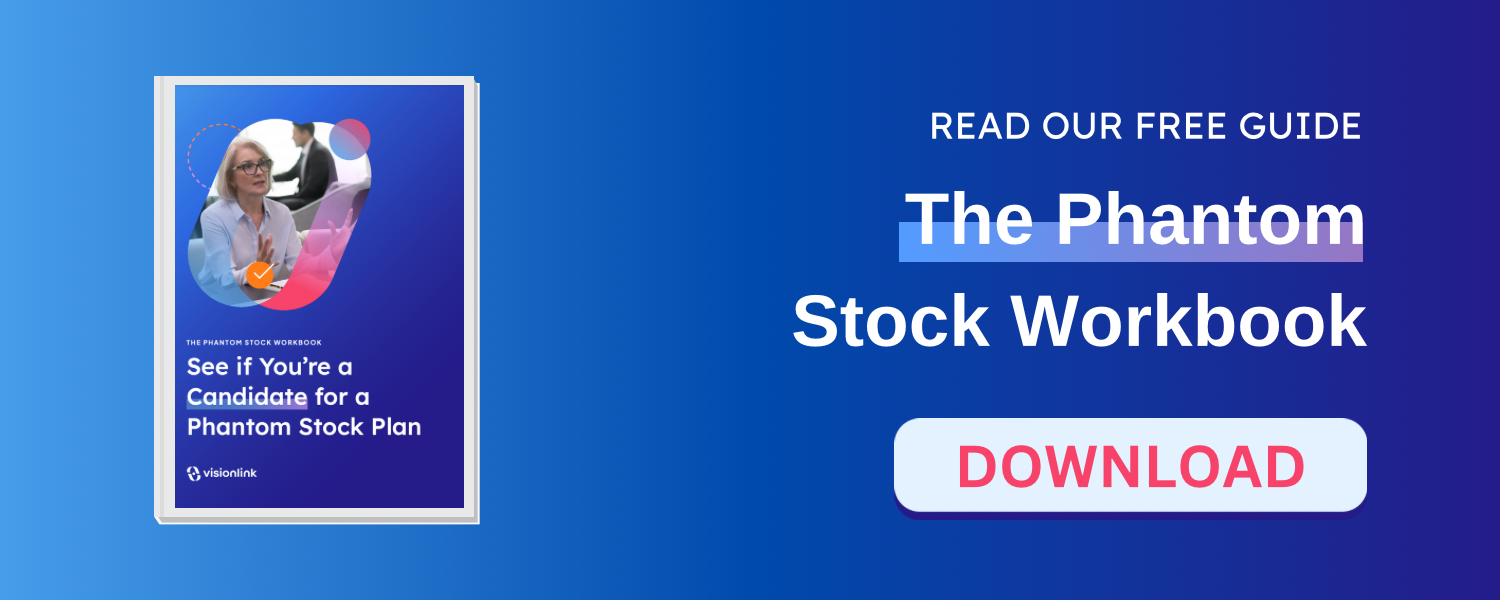
A majority of VisionLink’s engagements focus on helping companies build an effective incentive approach—one that will reward both short and long-term value creation. When it comes to deciding on the long-term part of the incentive, most business leaders want to know if there are alternatives to sharing stock. This is because a majority of them run private companies and would prefer to not give away equity.
Our review of the options inevitably includes a discussion of phantom stock. That conversation almost always prompts a kind of “if you give a mouse a cookie” exchange with the client. “But if I do that, won’t I have to…?” is the starting phrase of their next 10 questions. This is due to the litany of misconceptions that exist about this rewards approach.
With that background in mind, and as a public service, I would like to address five of the most common myths that surround this topic. But first, a brief primer on this long-term value-sharing approach.
What is It?
A phantom equity program is a form of long-term incentive that is designed to award employees for sustained performance and contributing to the growth of the company. In effect, it is a type of deferred bonus with the value tied to appreciation in the equity or market value of the sponsoring company.
The term “phantom stock” is not a formal or statutory designation. Some companies may use the term to describe any type of plan in which employees must wait until a future date to receive the financial benefit of a promise made by their employer today. More narrowly it indicates a plan that is intended to mirror restricted stock awards or stock option grants. In this usage, the sponsoring company creates certain units or “phantom shares” that may resemble actual stock, but are actually a commitment to pay the employees cash upon fulfillment of certain conditions such as time of employment or growth in the value of actual company stock—or both.
This terminology may also be known by such descriptors as phantom shares, simulated stock, shadow stock or synthetic equity. Stock Appreciation Rights (SARs) are a form of phantom equity which are sometimes referred to as phantom options.
To gain a more comprehensive understanding of this type of long-term incentive, read this report: https://www.vladvisors.com/phantom-stock-the-ideal-plan-for-growing-private-companies-report
The 5 Myths
With that brief overview as a foundation, let’s now dive into the five common myths that most business leaders have either assumed or heard about phantom equity plans.
Myth #1—To offer employees some type of phantom equity plan, you have to conduct a formal company valuation every year.
You do not need a formal valuation to provide a phantom equity incentive plan to employees—and a majority of companies do not use one. Instead they compute a formula value.
Most company owners have a sense for how their business would be valued by a willing buyer. Customarily, they have observed transactions within their industry and are aware of key indicators and multiples. For example, competitors may have sold to buyers for “6 times net income” or “5 times EBITDA” or “1 times revenue.” Such a formula may become the starting point for the discussion regarding the formula value. However, the company would not typically use the formula that might represent actual market conditions. Those conditions may change and it is possible the company may one day sell for less than what the assumed market multiple is today.
For these reasons, the possible market multiple value would usually be discounted. For example, if the assumed multiple value is “6 times net income,” for purposes of the plan formula value the company may use “5 times” or even “4 times.”
Further adjustments may be made to account for the level of long-term debt within the company. For example, the formula value could be expressed as “6 times net income minus long-term debt.”
Adjustments may be made for other elements as well (cash, net equity, etc.). The formula value should ultimately arrive at a value that can be easily calculated from the company’s financial statements and fairly represents underlying economic value.
Dive deeper into how share value in these plans is determined here: http://www.phantomstockonline.com/wiki/Valuation
Myth #2—If you give out phantom shares, you can’t give away actual stock also.
Phantom and restricted stock or stock option plans are not mutually exclusive rewards offerings.
The leaders of most organizations have different levels of long-term financial commitment they are willing to make to employees based on a variety of factors. Maybe some have been making a contribution for a long period of time and others just arrived in the company. Current owners may envision one or more employees assuming a shareholder role in the company sometime in the future and want to start giving away equity incrementally starting today. These variables may cause a company to offer stock to one or more employees but put others under a phantom equity or SAR arrangement. Those in that latter category may have the option for exchanging their shares for real stock at a defined point in the future. In any case, both a stock and phantom plan can operated at the same time.
Myth #3—Giving away phantom shares is not as financially beneficial to owners as giving real shares.
The economics of sharing value with employees usually favors phantom shares over real shares for owners. For one thing, shareholders are not experiencing any dilution in equity value because real stock is not being exchanged. In addition, no real value is being given away until a distribution event is triggered—i.e. a designated payout period, retirement or change in control of the company. At the time a distribution is made to employees, the payment is fully deductible to the employer. In general, phantom plans offer more financial flexibility to owners making them the overwhelming choice for owners of closely held companies.
Myth #4—Receiving phantom shares is not as financially beneficial to participating employees as real shares.
There are several reasons phantom equity is a more financially favorable plan for employees. First of all, shares do not have to be sold (or purchased as they would in a stock option plan) to realize a payout of value. Most plans have designated payout periods (commonly five to eight years in the future) when participants will receive a distribution from the plan. At that point, they are paid in cash (unless the plan gives them the option of trading phantom shares for real ones).
Until participants receive a payout under the plan, there is no financial implication to the employee. As phantom value accumulates, the participant does not have to declare that value as income or pay any taxes.
Myth #5—Phantom plans are a cash flow drain for the company.
As you have probably figured out from the responses to Myths #s 3 and 4, phantom equity does not create a cash crisis for owners. Because no plan benefits are paid out until designated maturity dates, there is no cash flow cost to the company in the meantime. This is one of the reasons so many private companies find them so attractive.
What many companies choose to do, however, is informally “fund” their plans. They set up a mechanism for ensuring they have cash on hand to pay benefits when the obligation comes due. This is not a requirement of the plan and is strictly a volunteer step on the part of the plan sponsor.
For more information on the cash flow implications of phantom equity, including funding, go here: http://www.phantomstockonline.com/wiki/financial_optimization
In today’s competitive environment for premier talent, offering an employee value proposition that includes a long-term value-sharing plan is essential. Most business leaders assume that means they will need to offer stock. They don’t. And, hopefully, you now know that a phantom equity plan is a viable alternative.
Ready to Get Started?
When it comes to building a compensation strategy, you can trust that VisionLink knows what works and what doesn’t. We are ready to share that knowledge with you.
Stay Connected
Receive free, ongoing access to updates on compensation and talent trends, reports, events, and more.


